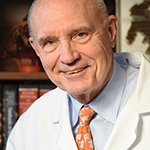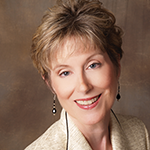As fellows, we learned a lot, but two tenets from my fellowship director and a former physician editor of The Rheumatologist, Philip Seo, MD, stand out:
- Rheumatology is advanced internal medicine. To be a good rheumatologist, you must be a good internist. It is far more helpful to tell a consulting physician that “it’s not a rheumatic disease, and here is how I would think about this complicated patient next,” than “it’s not rheumatic disease, thanks”; and
- Words matter. The language you use in the medical chart can and will follow a patient around for the rest of their lives. And the words you use when speaking to a patient can either inspire trust and hope or mistrust and despair. Choose carefully.
Academic Rheumatology
As my fellowship came to a close, I knew I wanted to stay in academics because I loved to teach, and I loved taking on and managing the toughest cases. I learned that the University of Texas at Austin had recently opened a new medical school that didn’t have a rheumatology division yet. So I emailed its chair of internal medicine.
“Hi, I’m Sam,” I wrote. “I’m finishing my training at Hopkins and want to teach and see patients. Do you want a rheumatologist?”
Within minutes, the chair replied with a “yes, call me,” and a few interviews later I was hired.
In 2018, I moved to Austin—knowing only one person in the city—to build a division of rheumatology at Dell Medical School. The waitlist to see me when I arrived was 1,245 patients long. I built a rheumatology clinic in a federally qualified health center. I built a rheumatology clinic in an orthopedic clinic. I built an academic inpatient rheumatology consult service. I also created an elective for medical students and residents and lectured the first-year medical students on clinical rheumatology.
By 2021, I was gearing up to build a rheumatology fellowship program, as well—and then I burned out. I was a shell of myself. I felt anxious all the time. I could not sleep. I was seeing a therapist. When my requests to negotiate my workload were met with “take it or leave it,” I resigned without a backup plan.
I jumped without a parachute, and it was the best thing I ever did.
Editor’s note: Read how Dr. Shapiro reimagined her career in part 2 of “Doctoring Differently.”



